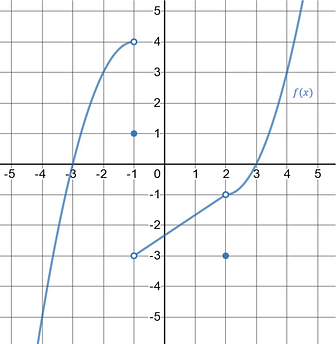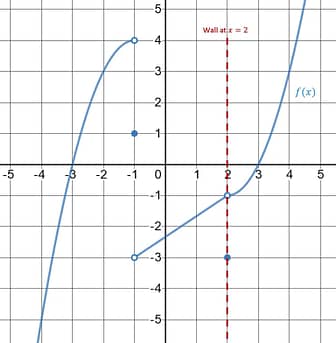Example 3: Overall Limit Exists
|
Determine |
|
|
Step 1: Draw a “wall” at the () you are heading towards.
In this example we will draw the “wall” at because that is the we are heading towards. |
|
|
Step 2: Determine what type of limit you are being asked to evaluate. LHL (), RHL (), or Overall .
In this example we do not have anything in the exponent of our . So, we are being asked to find the Overall Limit. |
|
|
Step 3 ( Overall ): To determine the overall limit, we must determine both the left and right-hand limits.
LHL : Drawing along your graph, , starting on the left side of the graph and moving to the right until you run into the “wall” you drew in Step 1 . In this example we run into the “wall” at .
RHL : Begin drawing along your graph, , starting on the right side of the graph and moving to the left until you run into the “wall” you drew in Step 1 . In this example we run into the “wall” at .
Overall : We now compare the LHL and the RHL to determine the final result for the overall limit. |
|
|
Final Result: In this example the LHL and the RHL both have results . Left-Hand Limit = Right-Hand Limit =
Overall Limit = |
|




